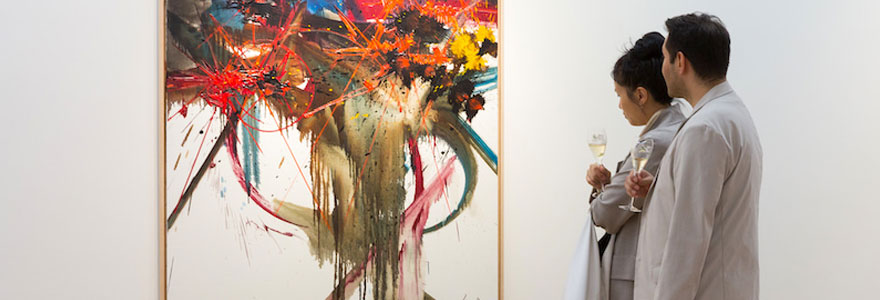Born in 1921, George Mathieu was a French painter who lived a productive life. He was also an art theorist and a member of the Academie des Beaux-Arts based in Paris. In today’s painting world, he is regarded as one of the fathers of European lyrical abstraction. In his adult life, George was an English teacher, and this is where his career in painting began. Further, if you are in the market to buy contemporary figurative art or looking to buy a painting by Mathieu George, then click on www.estades.com and order yours today.
In 1942, was when he started with various figurative paintings in England. In 1946, some of his abstract paintings were featured in a luxurious exhibition in Paris, and from here, his career took off.
Featured in this post are some of his best works. They include:
Pandosie, 1976
Mathieu George did the Pandosie painting in 1976. In this work, George is trying to associate it with ‘Tachiste painters,’ a French word for stain or blot. It is characterized by pressing paint directly onto the canvas material as he painted. The squeezing paint method was a gesture of aligning his work with abstract history painting.
Many of his titles are a direct or indirect reference to events that happened in French history. The Pandosie painting made it to performance art, where it was executed on a large canvas before a live audience.
Lasgaroth, 1967
The Lasgaroth painting was exhibited in 1978 at the Grand Palais. During this exhibition, George displayed 14 other paintings he had done in previous years. Also included on this occasion were seven six-meter wide paintings he had been drawing from January of the same year. He had executed them in anticipation for the day he would officially open the Grand Palais.
The occasions that transpired during the grand opening played a role in helping George receive the Legion of Honor award. Further, he was named Commander of Arts and Letters. His paintings appear in more than 80 museums worldwide.
L’Heure Troublee, 1986
George painted this piece of art in 1986. It was done on oil and canvas and had a series of colors that bring out the painter’s expertise in mixing colors. It has patches of conspicuous red and details of black around the middle. On a closer look, he also used the color purple on the corners to make the painting more appealing.
The painting was first exhibited in Findlay Gallery, New York City, in 1987
Ingrabam, 1989
The Ingrabam painting followed the Tachisme method. It was a French painting style that was popular in the 1940s and early 1950s. After the Second World War, this painting method gained popularity in France because of its attention to detail. Mathieu was one of the pioneers that advocated for the employment of this painting style. Soon after, many other painters followed suit, but the Ingrabam painting stood out from the rest.
The Ingrabam painting comprises a visible red color that goes on in the entire painting. Spots of yellow and blue are also seen in the painting, complementing each other. Lastly, a streak of black is seen cutting through the painting to add a little dullness.
Agra, 1970
Painted in 1970, the Agra painting was one of Mathieu’s finest works. It used the Tachisme style, which was quite impressive as it was painted using oil as a medium. Red is the main theme as streaks of black and yellow are seen emerging. George studied the tachism style in 1951 on a series of monochromic canvases. He later then produced one of his best Tachisme paintings in 1970.
Conclusion
George Mathieu passed on in 2012, but his legacy lives on.
